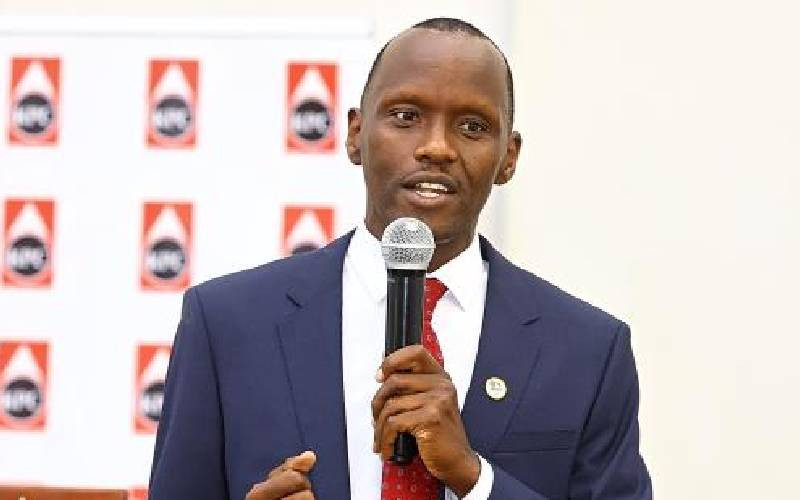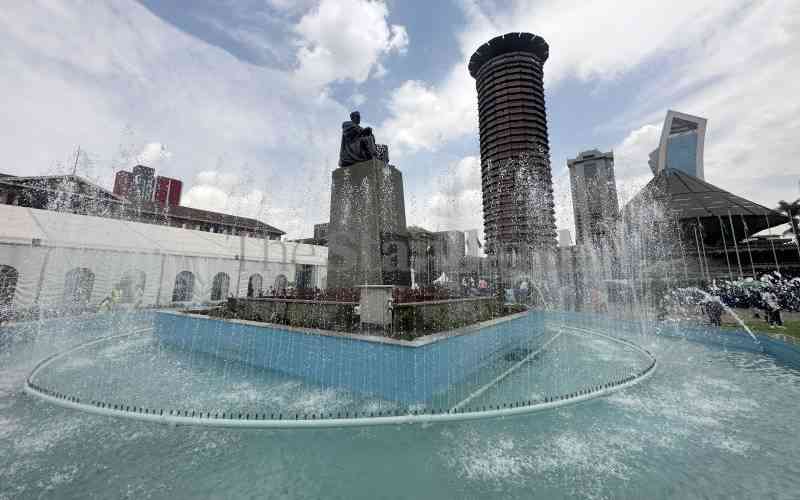NAIROBI: Two significant developments in the oil and gas sector have taken place in the recent past.
First, the global oil prices have experienced an unprecedented free fall whose effect is a major reduction in fuel prices and more demand for petroleum products.
As a result, everything now looks bright and the Kenyan economy is poised for growth higher than IMF’s prediction of 6 per cent this year.
Second, more oil and gas have been discovered in Kenya, raising the country’s energy profile.
But as the good news unfolds, does Kenya have the capacity to put up the requisite infrastructure as demand for petroleum hits critical phase?
Part of the answer to this question must come from the Kenya Pipeline Company (KPC), whose mission is to be a leader in the safe and efficient delivery of quality oil and gas from the source to the customer.
As one of the most profitable public institutions, KPC has over the last four decades provided efficient, reliable, safe and cost-effective means of transporting petroleum products from Mombasa to the hinterland, besides provision of storage and loading facilities for these products.
Envisaged in KPC’s new Corporate Strategic Plan is a new growth strategy that will put the company on the regional map to cater for the growing demand for petroleum products.
We are investing heavily in new projects to enhance pipeline system capacity to increase volumes.
KPC is currently engaged in the construction of a 20-inch pipeline to replace the ageing 14-inch Mombasa-Nairobi one.
The current Mombasa-Nairobi line is replete with system constraints that cannot meet current demand.
The new 450-kilometre pipeline, which is one of the Vision 2030 flagship projects, is expected to meet demand for petroleum products until the year 2044.
According to the Petroleum Institute of East Africa (PIEA), Kenya’s demand for petroleum products in 2010 was 3.4 billion litres. In 2014, however, it stood at 4.4 billion litres.
Regionally, the combined demand for Rwanda, Uganda, Burundi, Eastern DRC, South Sudan and northern Tanzania in 2010 stood at 2.4 billion litres but in 2014, it was 2.8 billion litres. This phenomenal growth calls for new thinking.
KPC is also constructing a 10-inch 122-kilometre pipeline from Sinendet in Nakuru to Kisumu, which is intended to increase volumes of product moved by 360 thousand litres per hour.
Stay informed. Subscribe to our newsletter
The Sinendet-Kisumu pipeline is a response to inadequate supply of petroleum products in Kisumu due to limitations of the existing 6-inch-diameter pipeline laid in 1992.
The company is also upgrading loading and storage facilities to meet new demand. The construction of a modern bottom truck-loading facility is currently underway in Eldoret and will be completed later this year.
The Nakuru-Kisumu pipeline and the new Eldoret truck-loading facility is a twin approach by KPC to cater for the rising demand for petroleum products in western Kenya and in the region.
Since the inception of KPC in 1978, the volumes of product moved have rised from 800 million litres per year to more than 5.6 billion litres in 2013/14.
This year, the company targets to move about 5.9 billion litres and with a bigger pipeline coming up, KPC is putting up additional storage tanks in the Nairobi Terminal.
The aim here is to more than double the storage capacity of diesel and super petrol; from the current 100 million litres to 233 million litres.
To ensure security of supply of jet fuel to Jomo Kenyatta International Airport, plans are underway to construct an additional jet fuel depot to cater for the airport’s expansion programme.
The JKIA Greenfield depot will increase storage capacity from 54 million litres to 126 million litres of jet fuel.
Besides this, KPC is in talks with key private investors with a view to acquiring their facilities in Mombasa and Nairobi to act as additional storage and truck-loading facilities.
And in western Kenya, the company plans to competitively engage private sector players with a view to have them invest in storage facilities to meet the regional demand.
Notably, Uganda, Rwanda, Burundi and Tanzania have recorded significant GDP growth rate in the last three years and given the correlation between GDP and petroleum consumption, it is expected the demand for petroleum in the region will obviously increase.
These initiatives will serve as relevant platforms to define the foundations of the future we want as a region.
In undertaking these massive projects, KPC has consistently adhered to the provisions of the Public Procurement and Disposal Act 2005.
The procurement processes have been confirmed by the relevant authorities to have been carried out in accordance with the law.
 The Standard Group Plc is a
multi-media organization with investments in media platforms spanning newspaper
print operations, television, radio broadcasting, digital and online services. The
Standard Group is recognized as a leading multi-media house in Kenya with a key
influence in matters of national and international interest.
The Standard Group Plc is a
multi-media organization with investments in media platforms spanning newspaper
print operations, television, radio broadcasting, digital and online services. The
Standard Group is recognized as a leading multi-media house in Kenya with a key
influence in matters of national and international interest.
 The Standard Group Plc is a
multi-media organization with investments in media platforms spanning newspaper
print operations, television, radio broadcasting, digital and online services. The
Standard Group is recognized as a leading multi-media house in Kenya with a key
influence in matters of national and international interest.
The Standard Group Plc is a
multi-media organization with investments in media platforms spanning newspaper
print operations, television, radio broadcasting, digital and online services. The
Standard Group is recognized as a leading multi-media house in Kenya with a key
influence in matters of national and international interest.









